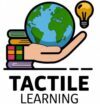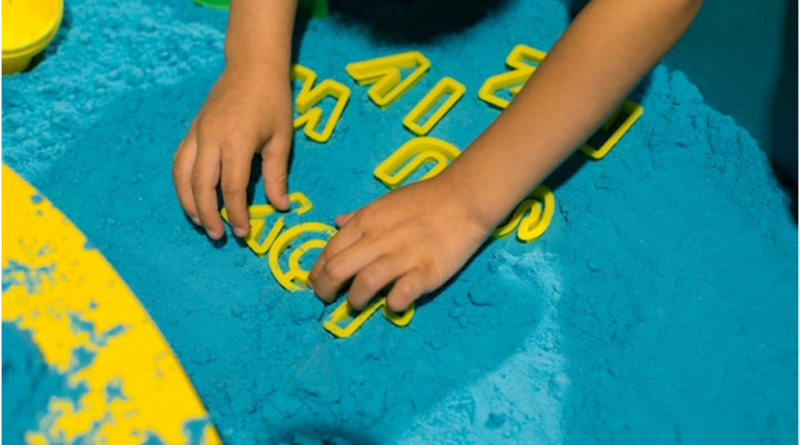Tactile Learning in Psychology: Unlocking the power of Touch
Tactile Learning, frequently stated to as hands-on-learning. Asis a charming educational and emotional concept that tourist attractions the role of touchand physical interaction in knowledge gaining. Rooted in theories of sensory processing and cognitive development, tactile learning underscores the importance of engaging the sense oftouchto enhance memory, problem solving, and comprehension. This article discovers the psychological foundations, assistances, challenges and practical application of tactile learning.Uncertainty you’re inquisitive for more detail, please observe “The WISE Journal” byCEBRA to see the articleorientationsand become more gratified about how ProcedureShadowsSpirits.
What is tactile learning?
Tactile learning is a learning style that prioritizes physical interaction with objects, tools, or materials to procedure and comprehendinformation. Unlike auditory or visual learning, tactile learning relies on touch, texture, and movement to create a deeper connection with the subject matter. Tactile learning actually help students to learn a lot about ideas, concept development and retaining ability of learners
From building clay models to manipulating puzzle pieces, tactile learners excel in environments where they can engage actively and “feel” their way to understanding.

The psychological basis of Tactile Learning
- Theory of sensory Integration
This hypothesis was created by occupational therapist Jean Ayres. Highlights how the brain integrates and analyze sensory data. Because it fosters both cognitive and motor development, tactile learners flourish when sensory motor system which is in charge of touch is actively activated. - Haptic and kinaesthetic perception
Haptic Perception, as used in psychology, is thevolumeto understand objects through manipulation and touch. According to research, tactile activities stimulate the part of brain linked to problem solving and spatial awareness related to memory or anything else.
Did you know? The somatosensory lens cortex, a part of intelligence and mind related to memory and emotional control, is activated by touch base learning.

- Embodied Thoughts
Embodied cognition is the impression that is meaningfully affects the mind. This point of view supports tactile learning, signifying that engaging the hands and body can improve sympathetic and strengthen neural path ways.

Qualities of Tactile Students or learners
Tactile Learners exhibit distinctive characteristics that distinguish them:
- Practical Approach to Solving Issues:
They are particularly good at jobs that need them to physically manipulate things, such as building models, making crafts, or fixing things.
- Preferenceforhands-oneducation
Trial and error approaches are preferred by tactile learners because they enable them to actively investigate and assimilate ideas.
For instance, creating shapes rather than reading about them would help a tactile betterunderstand geometry principles. - Material and Texture Sensitivity
They can make a assembly between theory and practice because they are insightful of the shapes, feels surfaces, and physical attributes of an objects. - Challenges in passive Learning
Reading, lectures, and listening may not be interesting to tactile learners since they need active engagement to retain information
Advantages of Tactile Education
- Improved Retention of Memory
Multisensory learning has been shown to increase retention. Information is simpler to remember when engaging in tactile activities since they strengthen brain associations.
Power Fact: Compared to passive learning strategies, learners retain up to 30% more information when employing tactile approaches.
.
- Enhanced Motor Aptitude
Engaging in hands -on activities improves both fine and gross motor abilities, which benefits physical development in general.
- Increased Originality and Solving Problems
Innovation is encouraged by tactile learning because it allows students to experiment and find answers via hands-on experience.
- Enhanced emotional Involvement
Emotion is intrinsically connected to touch. Positive emotions are frequently evoked through, hands-on activities, which boost motivation and lower worry.
Trails in Tactile Learning
- Limited Integration in Traditional Education
Classrooms often prioritize visual and auditory methods, leaving tactile learners underserved.
- Limitations on Resources
Not all educational institutions have the tools, materials, or time to incorporate tactile activities effectively.
- Misunderstanding of Learning Styles
Tactile learners are sometimes misbranded as inattentive or disruptive when their need for movements is not understood.
Tactile Learning in Psychological Therapies

- Play therapy and practice
In child psychology, play therapy and practice uses tactile activities like clay modeling and sand play and various practices to help children to express emotions and process experience.
- Art therapy and practice
Art therapy and practice employs tactile materials like , fabrics, paints, or sculpture to facilitate emotional healing and self-expression.
- Therapy through Sensory Integration
This therapy uses touch-based activities to enhance cognitive abilities and sensory integration in people with sensory processing disorders.
For instance:therapists can assist clients develop sensory tolerance by busing textured surfaces
Techniques for Using Tactile Learning

- Employing Manipulatives
Incorporate tools like building blocks, puzzles, or clay into lessons. These tactile objects create a hands-on experience that reinforces learning.
- Take Part in Experiments
Because they demand active engagements, science experiments and interactive projects are perfect for tactile learners.
For instance: Tactile learners may discovery it more helpful to carry out informal experiments in lab somewhat than interpretation about bio chemical responses. Utilize technology
Digital toolslike Touch screen, VR devices, and interactive white boards simulates tactile experiences in modern setting.
Power Tips: programs such as Osmo proposaltouch- base educational games.
- Presenting Craft-Based Learning
Tactile learners with chances to make, discover, explore, and express ideas physicallyand growcerebral capabilities of learners through Art and Craft.
Example: Building dioramas to learn and understand about eco system help students to engage with it and develop their meta cognitive abilities.
The Role of Tactile Learning in Child metacognitive development
Touch theatres a critical role in childhoodaMETA COGNITIVE development. Offsprings and young broods learn about their environment primarily through tactile survey.
DevelopingAssistances:
- Enhances fine motor skills like gripping and writing.
- Strengthens spatial awareness through block play or puzzles.
- Boosts emotional connection through comforting textures.
Actual-BiosphereApplications of Tactile Learning
Real -World application of tactile learning based on following steps:
- In the STEM domains
For tactile learners, hands-on laboratories, prototype construction, and Robotics are perfect because they help close the gap between theory and practical application. What kind are they?. In STEM learning particularly, hands-on activities can be crucial for success.
- During vocational Education
To develop skill, professionals like mechanics, carpentry, and culinary arts are mainly rely on Tactile learning.
- In the field of special education
To assistance students with autism, ADHD, or sensory processing issues, tactile learning approaches are often and regularly employes
For instance, Sensory bins with sand or rice inside can aid with children’s self-control and concentration

Links to Resources
- Discover sensory motor activities on Understood.org.
- Explore tactile tools for classrooms at Lakeshore Learning.
- Studyaround sensory integrationtherapy Child Mind Institute.
Conclusion: TheUpcomingof Tactile Learning
Tactile learning strategies are most effective for learning process of students. Tactile learning isn’tjust afavorite it’s a powerfulcognitive tool that recovers and enhancesympathetic, reminiscence, and expressive connection. By fraternization touch-based actions in to education,psychology, and therapy, we can solve and unlock the potential of learners across all ages and abilities. In a word graduallyconquered by screens tactile learning remind us of enduring importance of Hands-on explorationand thoughtfulimpression of trace on the human attention.
What tactile learning strategies have you found most effective or engage students most effectively? Share your thoughts below:

Top of Form
Bottom of Form
Understanding learning styles and knowing how to support students learning in classroom are crucial if you want to become a teacher. Earning a degree will help prepare you to become a teacher, and being able to connect with kids in the most effective manner can help you a great teacher.




